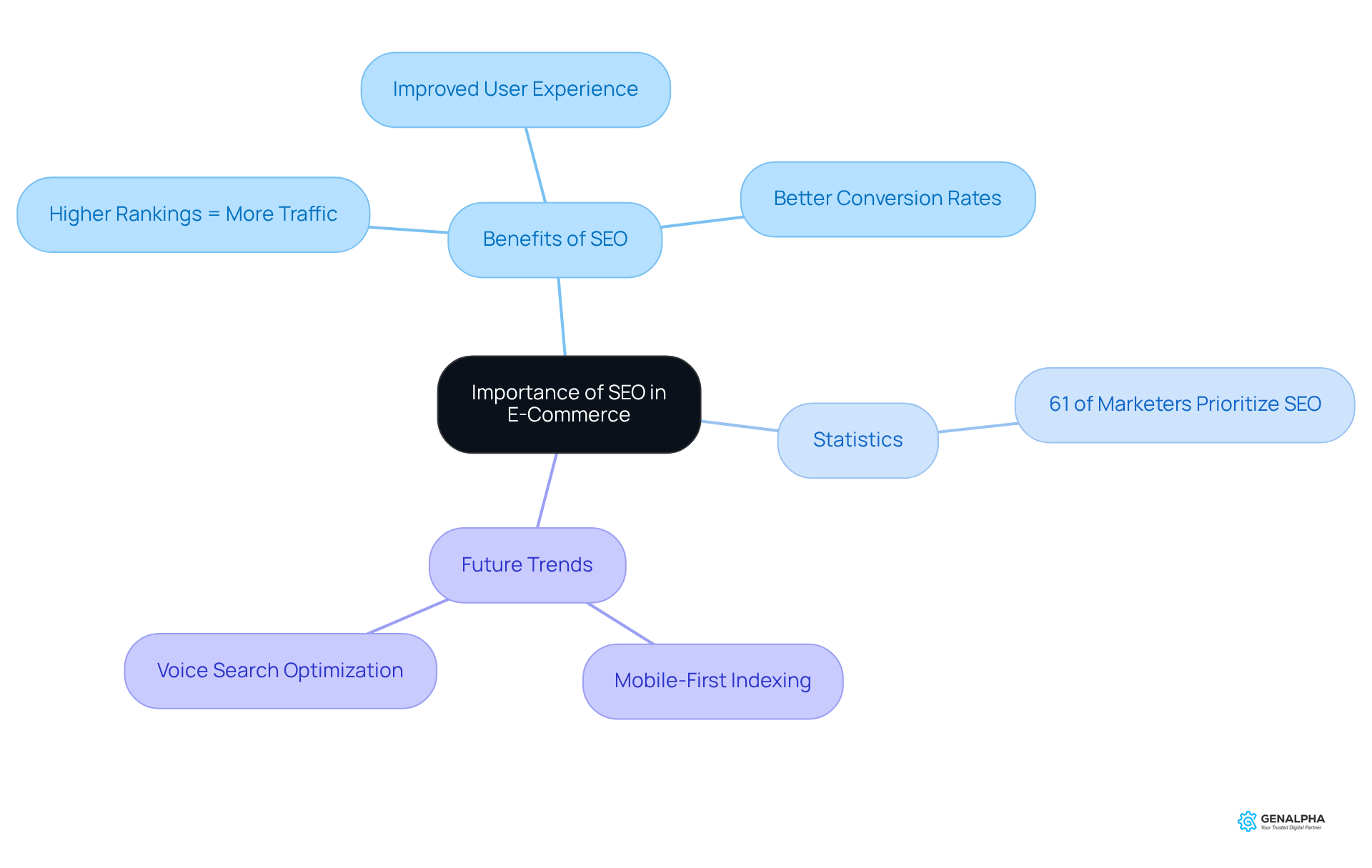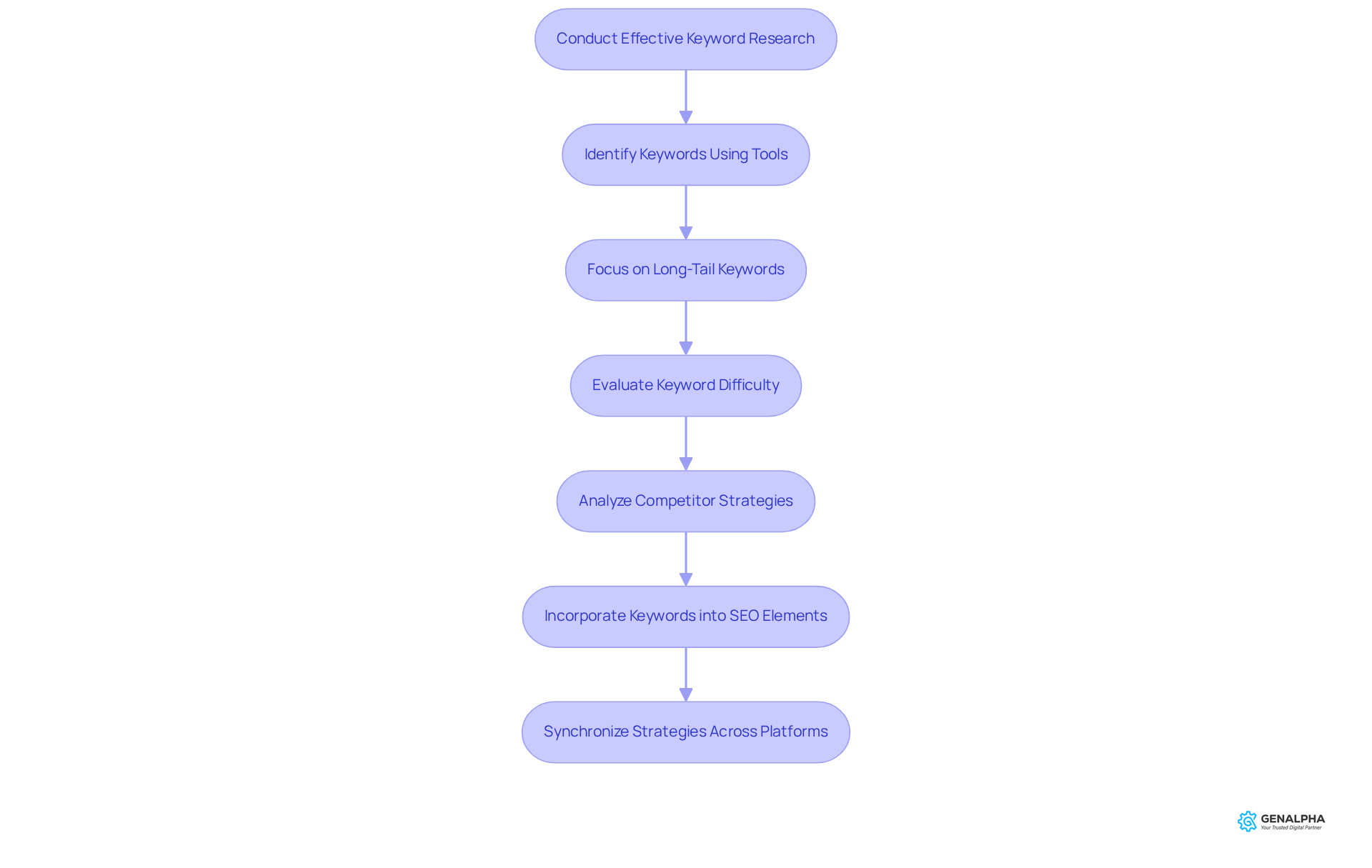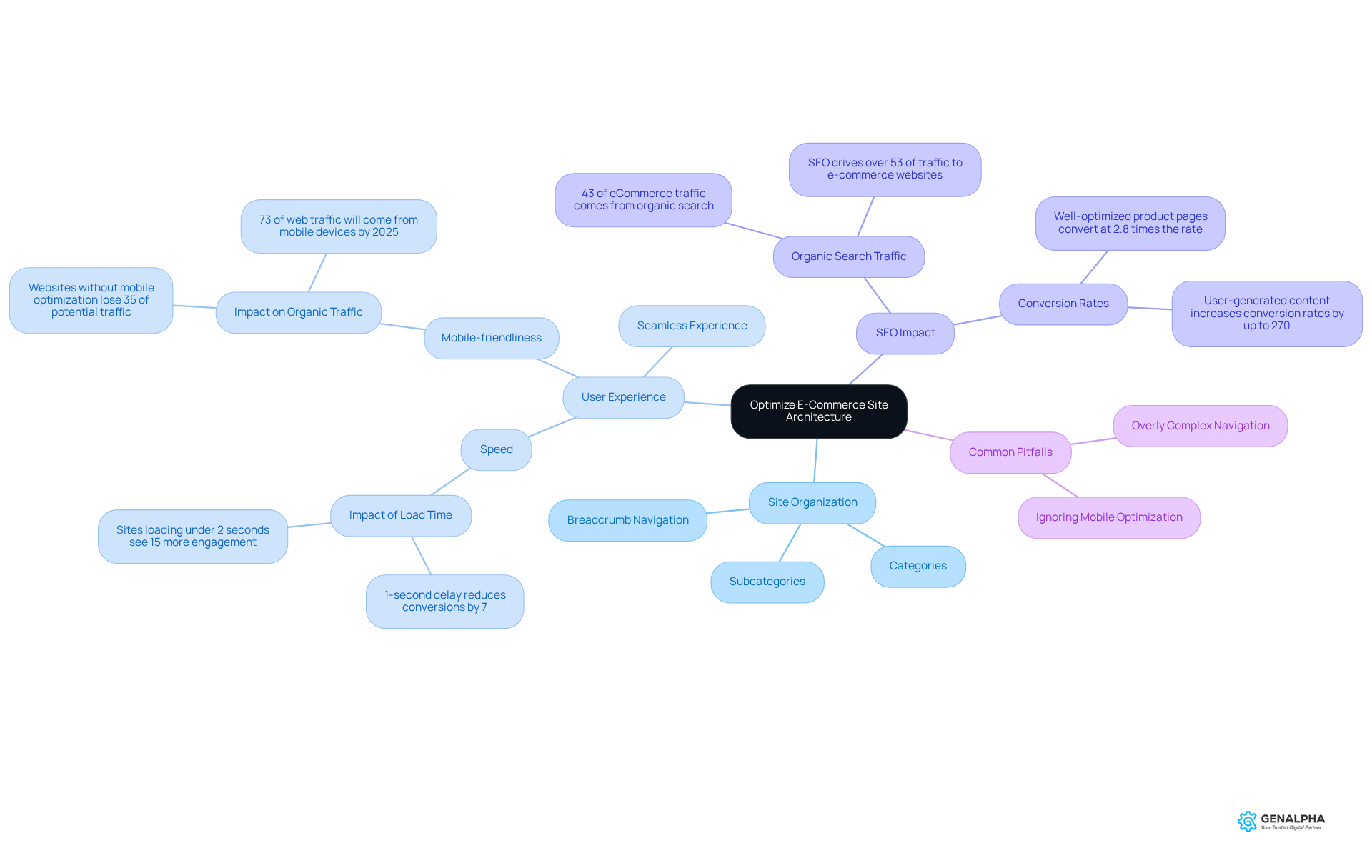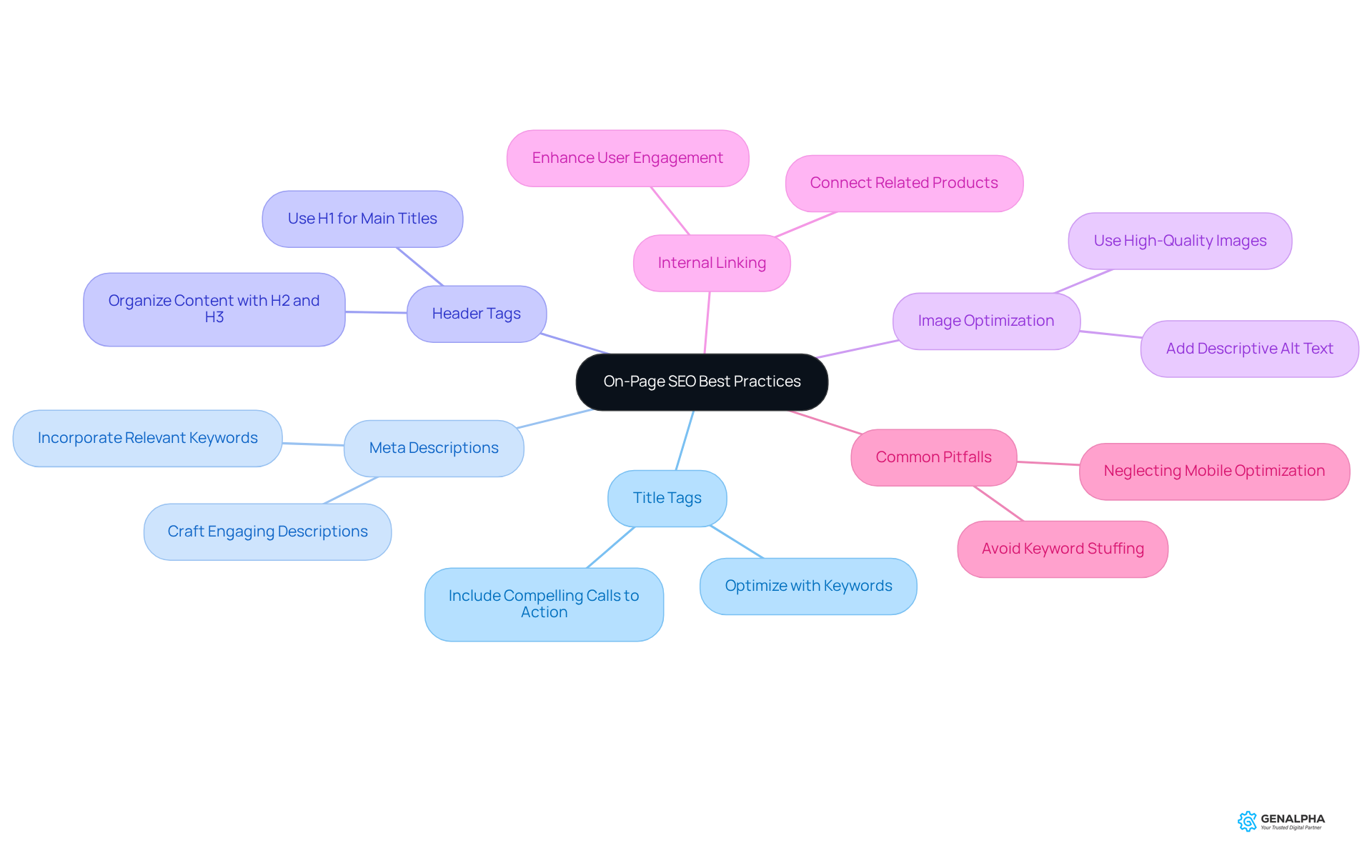Overview
So, let's dive into the world of SEO for e-commerce sites! Have you ever wondered how some online stores seem to pop up everywhere? Well, it all boils down to a few key strategies. First off, understanding the importance of SEO is crucial. It’s not just about getting traffic; it’s about attracting the right kind of visitors who are ready to buy.
Next, we have effective keyword research. Think of it as finding the right words that your potential customers are typing into search engines. By honing in on these keywords, you can tailor your content to meet their needs. Additionally, optimizing your site architecture is essential. A well-structured site not only helps search engines crawl your pages but also makes it easier for users to find what they’re looking for.
And let’s not forget about on-page SEO best practices! These are the little tweaks that can make a big difference in how your site performs. When all these strategies come together, they create a powerful recipe for success, enhancing your online visibility and improving user experience.
Ultimately, implementing these strategies can drive sales and highlight the critical role of SEO in today’s competitive e-commerce landscape. So, are you ready to take your e-commerce site to the next level? Let’s get started!
Introduction
Welcome to the digital marketplace, a constantly changing landscape where online retailers are swimming in a sea of competition, all vying for your attention.
Have you noticed how search engines are always tweaking their algorithms? That’s why effective SEO strategies for e-commerce sites are more crucial than ever.
In this article, we’ll explore four key strategies that can boost your online store’s visibility and drive those all-important sales. We’ll dive into:
- Keyword research
- Site architecture
- On-page optimization
But with so many tactics out there, how can e-commerce businesses prioritize their efforts to not just survive but truly thrive in this dynamic environment? Let’s find out together!
Understand the Importance of SEO in E-Commerce
SEO for e commerce sites is a crucial part of online retail, ensuring your store stands out to potential customers. With countless online platforms competing for attention, utilizing effective SEO for e commerce sites can significantly boost your webpage's ranking on search engines like Google. Why does this matter? Well, higher rankings mean more organic traffic, which is often more budget-friendly than paid ads. Plus, a well-optimized site not only draws in visitors but also enhances user experience, leading to better conversion rates.
For example, a study by HubSpot revealed that 61% of marketers view improving SEO and growing their organic presence as a top priority. This highlights just how vital SEO is in the digital marketplace. By putting SEO for e commerce sites at the forefront, online retail businesses can establish a solid online presence, attract more qualified traffic, and ultimately increase sales.
As we look toward 2025, the role of SEO for e commerce sites in driving online sales is set to become even more significant. With trends like mobile-first indexing and on the rise, businesses that embrace these changes will likely enjoy substantial boosts in visibility and sales performance. So, are you ready to prioritize SEO and take your online store to the next level?

Conduct Effective Keyword Research for E-Commerce
Effective keyword research is crucial for online business success. It helps us pinpoint the exact terms and phrases that potential customers use when they're searching for products online. So, how do we get started? Well, tools like , SEMrush, and Ahrefs are fantastic resources. These tools are part of a toolkit that high-performing e-commerce teams are using in 2025, covering everything from intent discovery to competitor intelligence and semantic coverage. They can uncover relevant keywords that have a high volume of inquiries but low competition.
Now, let’s talk about long-tail keywords. Prioritizing these is particularly beneficial because they often indicate a higher intent to purchase. For instance, instead of going after a broad term like 'equipment,' why not focus on something more specific like 'heavy-duty construction equipment for sale'? This approach can help attract more qualified leads.
Did you know that long-tail keywords make up 92% of all inquiry queries? That really highlights their importance in attracting targeted traffic. Plus, businesses that focus on buyer-intent keywords usually see higher conversion rates compared to those relying on generic terms. Take Cosmetify, for example. They improved their average keyword ranking by 12.6 positions and enjoyed a whopping 250% boost in organic revenue just by targeting purchase-oriented keywords.
Evaluating keyword difficulty is also key. This score ranges from 0 to 100 and helps us prioritize keywords effectively. By analyzing what competitors are doing with their keyword strategies, we can identify gaps and opportunities to leverage for our own advantage. Incorporating these keywords seamlessly into product descriptions, titles, and meta tags is essential for implementing SEO for e-commerce sites, which can significantly increase our platform's relevance. This not only enhances our chances of ranking better in search results but also leverages SEO for e-commerce sites to align our offerings with customer needs, ultimately driving sales and boosting customer engagement.
Finally, don’t forget about synchronizing keyword strategies across platforms. This can lead to consistent branding and improved visibility, making sure that our online sales initiatives are cohesive and effective. So, are you ready to dive into keyword research and see how it can transform your online business?

Optimize Your E-Commerce Site Architecture
Optimizing your e-commerce platform architecture is super important for boosting both SEO for e-commerce sites and enhancing user experience. Think of it this way: a well-structured framework helps search engines grasp your platform's hierarchy and content, which makes indexing a breeze. Start by organizing your products into logical categories and subcategories that match how your customers search. Have you ever felt lost on a website? Implementing breadcrumb navigation can help users retrace their steps easily, making their browsing journey much smoother.
And let's not forget about speed! Fast loading times and mobile-friendliness are key players in optimizing SEO for e-commerce sites, as they can really impact your SEO rankings and user satisfaction. Did you know that according to Taylor Scher, "A one-second delay in page load time can reduce conversions by 7%?" That's a big deal! Google loves platforms that offer a seamless experience across all devices. In fact, research shows that online retail sites with organized categories can see up to a 50% boost in organic traffic. Just look at how Amazon and eBay do it—they’ve nailed efficient category arrangements that make finding products a walk in the park.
However, beware of common pitfalls when applying SEO for e-commerce sites! Overly complex navigation structures or ignoring mobile optimization can really hurt user experience and SEO performance. So, how can you avoid these traps and create a platform that shines? Start today and watch your e-commerce success soar!

Implement On-Page SEO Best Practices
Boosting your online store's visibility is all about nailing those on-page SEO strategies, especially when it comes to implementing SEO for e-commerce sites by optimizing title tags and meta descriptions for each product page. These little gems should not only pack in relevant keywords but also feature compelling calls to action that make users want to click. Did you know that retailers who invest in SEO for e-commerce sites often see, on average, a 25% bump in e-commerce sales within just 12 months? That really shows how crucial those refined title tags and meta descriptions are for visibility and click-through rates.
Organizing your content with header tags (H1, H2, H3) makes navigation smoother for both users and crawlers. Plus, using high-quality images with descriptive alt text not only enhances accessibility but also gives your SEO a nice little boost. And let’s not forget about internal linking! By connecting related products, you’re not just promoting cross-selling; you’re also keeping users engaged on your platform for longer.
As industry experts say, "Click-through rates are the bread and butter of online commerce SEO." This really highlights how important it is to to climb those search engine rankings and keep users engaged. But watch out for common SEO pitfalls, like keyword stuffing or neglecting mobile optimization, as they can really hurt your platform's performance. In the end, implementing these on-page SEO best practices is key to driving sales and enhancing SEO for e-commerce sites' visibility. So, are you ready to take your SEO game to the next level?

Conclusion
Prioritizing SEO for e-commerce sites is crucial if you want to stand out in today’s competitive online marketplace. By effectively using SEO strategies, businesses can boost their visibility, attract the right traffic, and ultimately drive those all-important sales. As the digital world keeps evolving, the importance of SEO will only grow, making it essential for online retailers to adapt and refine their strategies.
Think about it: key strategies like thorough keyword research, optimizing site architecture, and implementing on-page SEO best practices are vital for achieving these goals. Tools like Google Keyword Planner and focusing on long-tail keywords can significantly enhance conversion rates. Plus, a well-structured site not only improves user experience but also helps with search engine indexing. And let’s not forget the details—attention to title tags, meta descriptions, and internal linking can really engage users and boost click-through rates.
The potential impact of these strategies on e-commerce success is huge. By embracing the latest SEO trends and best practices, online retailers can not only climb the search rankings but also create a more enjoyable shopping experience for their customers. This holistic approach to SEO isn’t just a technical requirement; it’s a powerful driver for growth and sustainability in the ever-changing world of e-commerce. So why wait? Taking action now to enhance your SEO efforts can lead to significant rewards down the line.
Frequently Asked Questions
Why is SEO important for e-commerce sites?
SEO is crucial for e-commerce sites as it helps them stand out among numerous online platforms, boosting their webpage ranking on search engines like Google. Higher rankings lead to increased organic traffic, which is often more cost-effective than paid advertising.
How does effective SEO impact user experience and conversion rates?
A well-optimized site not only attracts more visitors but also enhances user experience, which can lead to better conversion rates.
What do statistics say about the priority of SEO for marketers?
According to a study by HubSpot, 61% of marketers view improving SEO and growing their organic presence as a top priority, underscoring the importance of SEO in the digital marketplace.
How can prioritizing SEO benefit online retail businesses?
By prioritizing SEO, online retail businesses can establish a strong online presence, attract more qualified traffic, and ultimately increase sales.
What future trends in SEO should e-commerce businesses be aware of?
As we approach 2025, trends such as mobile-first indexing and voice search optimization are on the rise. Businesses that adapt to these changes are likely to see significant improvements in visibility and sales performance.




